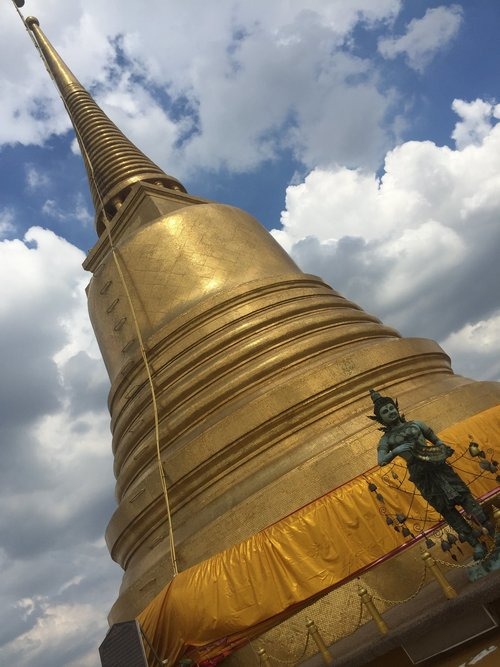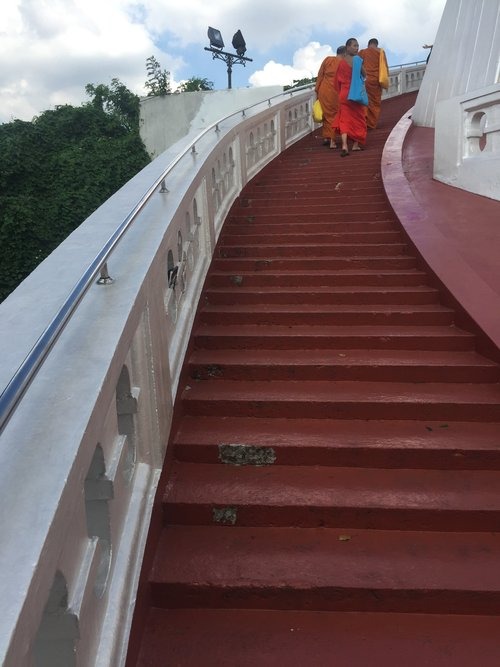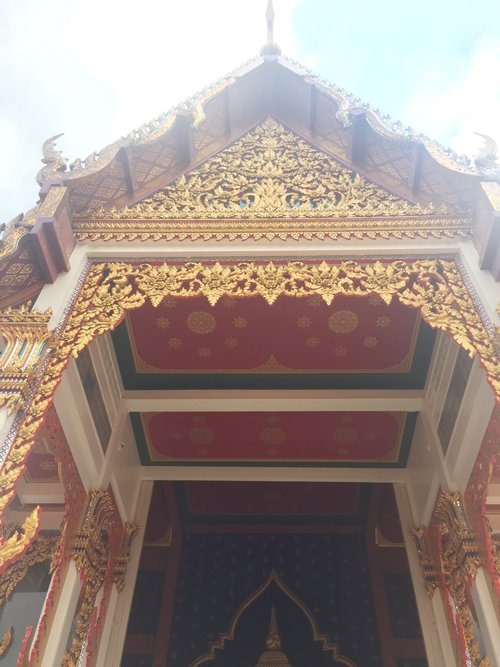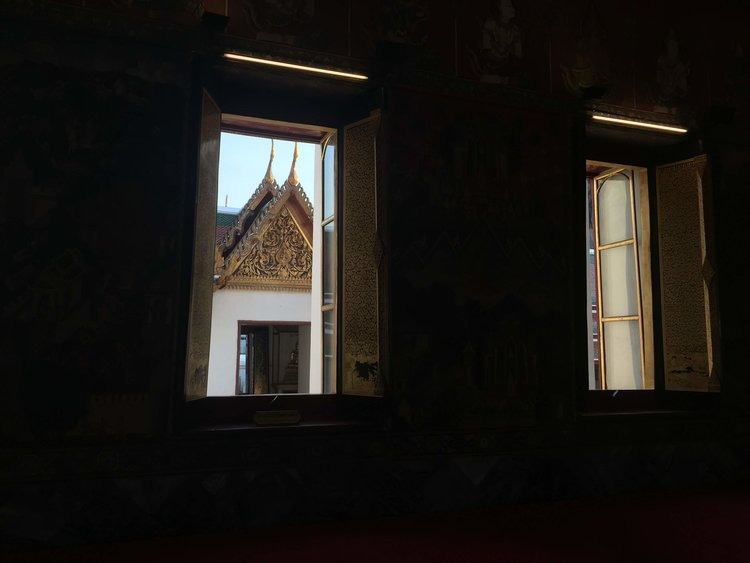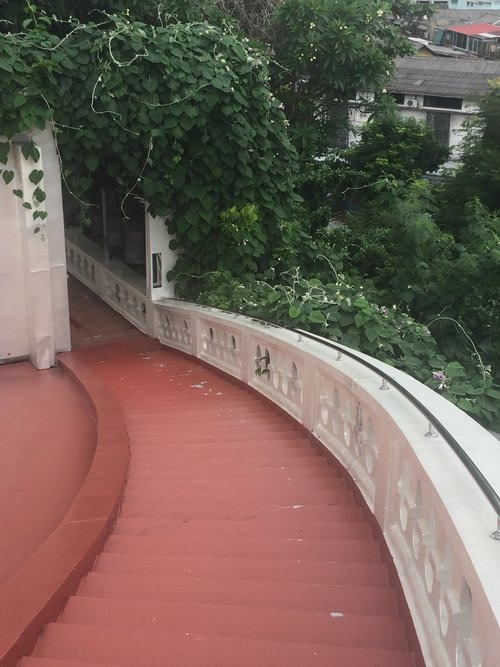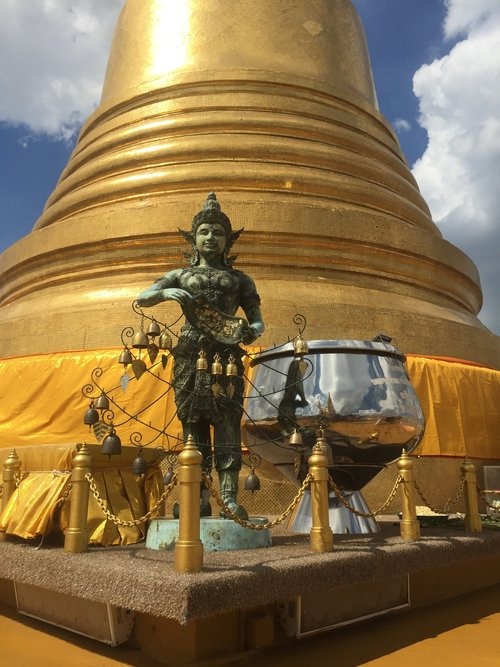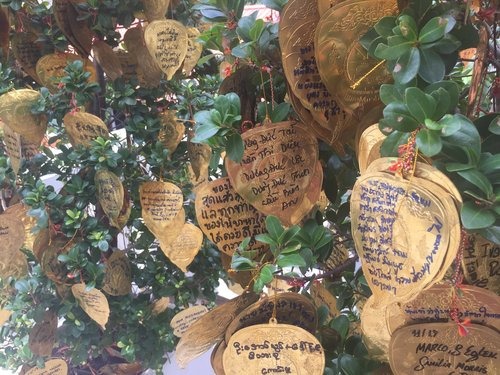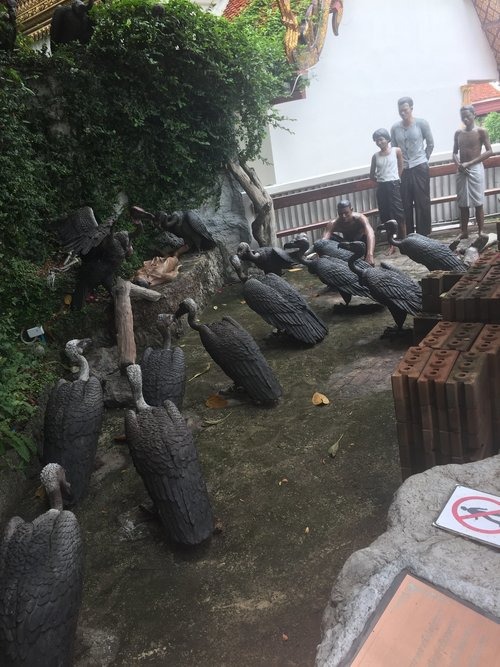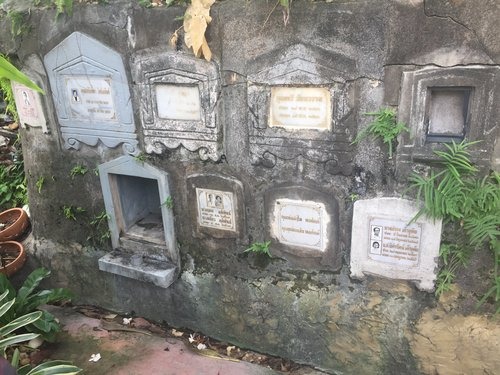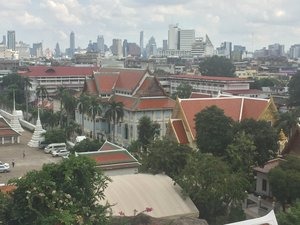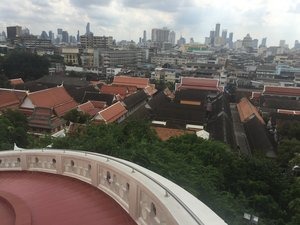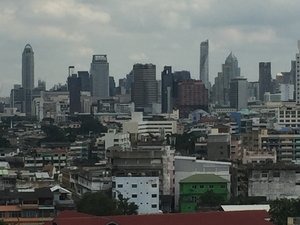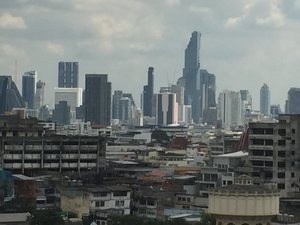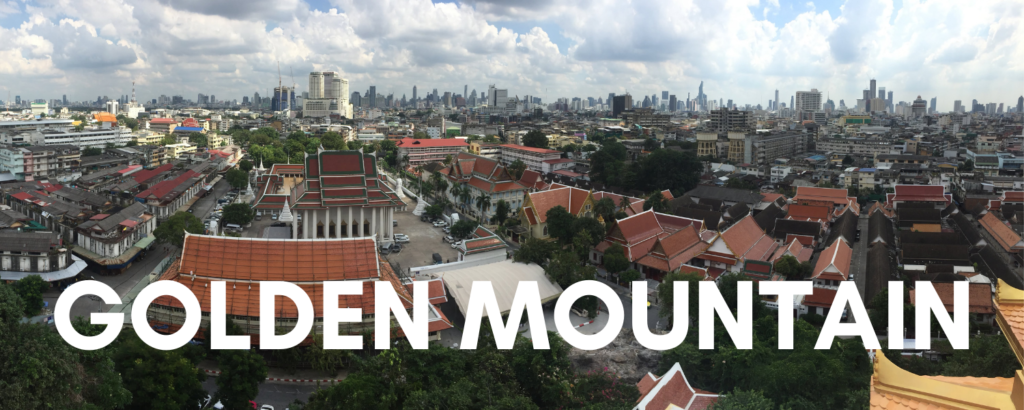
Officially called Wat Saket Ratcha Wora Maha Wihan (วัดสระเกศราชวรมหาวิหาร), this temple is more commonly known as Wat Saket. Within the temple compound stands The Golden Mount (ภูเขาทอง pronounced “Phu Khao Thong” in Thai). We’re not sure what the rules are on having a favourite temple, but if we could, then this is a solid contender.
The temple was founded back when Ayutthaya was still the seat of royal power (sorry Bangkok, you had to wait your turn). It wasn’t until King Rama I came to power that the temple compound began to take shape as we know it today – name included. The main temple structures surround the base of the Golden Mountain. They are worth exploring as they house beautiful statues and paintings. Like most Thai Buddhist temples, the courtyards and tile work are exquisite.
The Golden Mountain developed through a series of construction and set backs (like when the original chedi collapsed) that spanned the reigns of King Rama III, IV, and V. Now this man made “mountain” is crowned by a 58 meter (190 feet) gilded chedi which contains a Buddha relic from Sri Lanka.
You can enter Wat Saket for free, but ascending the Golden Mountain will cost you 50 Baht as a foreign tourist. Be sure you are dressed appropriately with shoulders and knees covered as this is an active place of worship.
The entrance to the Golden Mountain is well signed and the ticket booth is clearly marked at the bottom of the stairs. If you’re visiting around November, be sure to check the dates for Loy Krathong as this Buddhist festival is a key celebration at Wat Saket. The lines will be daunting.
An oddity of the Golden Mountain comes in it’s old graves, now draped in vines, and it’s curious statues of people and vultures. The plague swept through Bangkok during the 18th century. At that time, Wat Saket formed part of the city’s outer wall. Bodies were brought en masse to be cremated. The area became known as the “Ghost Gate” and was often frequented by vultures. Plaques will help you understand the scenes being depicted by the statues.
Sunset is the golden time (literally) so be sure to make your way up top to watch Bangkok tuck away her daytime wear and slip into her city lights for the evening.
Here’s why you should go to the Golden Mountain
- compared to some of the soaring towers in Bangkok, 50 Baht ($2.20 CAD / $1.65 USD / €1.5) is a fraction of what you’d pay for their observation decks and the 360 degree view is awesome.
- the 300 step climb is not a hard one and people of all ages and abilities can tackle this mountain trek. Once inside the temple, there is one more flight of stairs to access the roof. This stairwell is narrow and low, but there is one to go up and one to go down to help the flow of traffic and avoid jostling.
- PICTURES! You can take pictures of anything in and around the Golden Mountain. You’ll see everything from selfie-stick photo shoots to what might be National Geographic freelancers snapping away at the vistas offered by the temple’s rooftop.
- at non-peak times, this is a truly quite place in a bustling metropolis. Linger in the gardens. Pause on the stairs. Listen to the chimes blow in the wind. Soak in the juxtaposition of an ancient temple built by Kings that provides commanding views of glass skyscrapers and river-spanning bridges. It can be a powerful moment if you stop to catch it.
Featured Pic Photo Cred: Joshua Moussa

